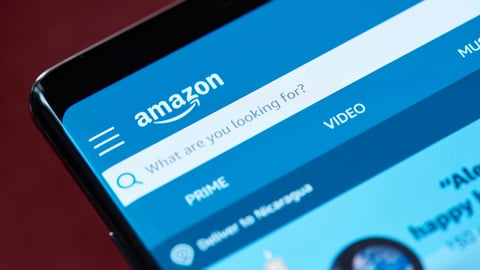3 Ways the COVID-19 Crisis Can Bring E-commerce Opportunities to Consumer Goods
What was going to happen for consumer goods e-commerce in 5-10 years just happened in the last six weeks, and it looks like it's not going back.
A SmartCommerce consumer research study conducted in late April revealed that 59% of consumers have now bought groceries online, and a whopping 38% of those shoppers reported having made their first online grocery purchase in the last month. And things won't go “back to normal” after COVID-19 — just 20% of online grocery shoppers say they'll return to brick-and-mortar-only buying when the crisis is over.
Habits are powerful things and — remembering that it takes 21 days to create a new habit (and most of us have been following stay-at-home orders for more than double that) — there are a lot of new habits that have been formed. For many consumers, cooking meals at home and buying groceries online have become the norm.
See also: How The Coupon Bureau is Cutting Down on Fraud and Unlocking Mobile Couponing
Consumers buying groceries online is either a massive challenge or a massive opportunity for consumer goods brands, depending on whether they are able to pivot marketing to reach and influence consumers where they are (which is not in the store). Here are a few strategies that CPGs can implement today as we accelerate out of the crisis.
1. Meet Consumers Where They Are
Due to COVID-19, consumers aren't going into grocery stores as frequently, if they are going into them at all.
But that’s far more significant than just a change of venue. Inside the grocery store, brands have the opportunity to remind consumers of products they want and to inspire them to buy new ones. In contrast, at retailer.com, your reach of the shopping consumer is basically limited to those who already know they want (search for) your product or brand. And your website reach is limited to consumers who deliberately visit to learn more.
To remind and inspire the rest of the consumers, you have to meet them where they are (ads, social media, CRM, etc.). We've seen tremendous growth in sales from social media over the last five weeks from sites like Pinterest, which is up 38% in product transfers to carts from pins — mostly from helpful content like projects, recipes, etc., that enable consumers to add products directly to their online retailer carts to be delivered or picked up from the store. There has been significant growth from Facebook and Instagram, as well.
2. Make Every Touchpoint a Conversion Opportunity
Smart consumer goods brands will rethink every digital touchpoint as a conversion opportunity. Brands create buying interest and desire, so why not make it easy for consumers to add their products directly to their retailer carts to close the sale?
See also: PepsiCo Quickly Launches 2 DTC Snack & Beverage Sites
Whether it’s ads, social media posts, packaging, etc., there is an opportunity for brands to convert consumers. If you're already taking the time and resources to make an ad or social media post, why not make it cart-enabled? If you're designing packaging for a new cereal box, why not add a QR code on the box for consumers to reorder it next week easily? Don't let your touchpoints go to waste by forgetting the bridge to an easy conversion.
3. Invest Heavily While Others Lean Back
Consumer goods brands should consider investing in "conquest" media touchpoints right now, while others are leaning back. Unstable stock statuses have created a massive land grab for brand loyalty, and now is a great time to pick up market share.
COVID-19 has also placed tremendous pressure on online ad pricing — all of this creating a vast opportunity for consumer goods companies to reach an audience that's now more interested in shopping online than ever, and to reach them at a lower price than what's been possible in the last few years!
The grocery e-commerce industry might not have been ready for COVID-19, but brands and retailers have rallied together beautifully to support consumers in difficult times. There are sure to be new challenges as we navigate moving out of the crisis, but brands that make an effort to reach new online shoppers and continue engaging with current shoppers are the ones that will win.
Jennifer Silverberg is the CEO of SmartCommerce, provider of the only path to purchase built and optimized for the unique needs of the CPG category.





